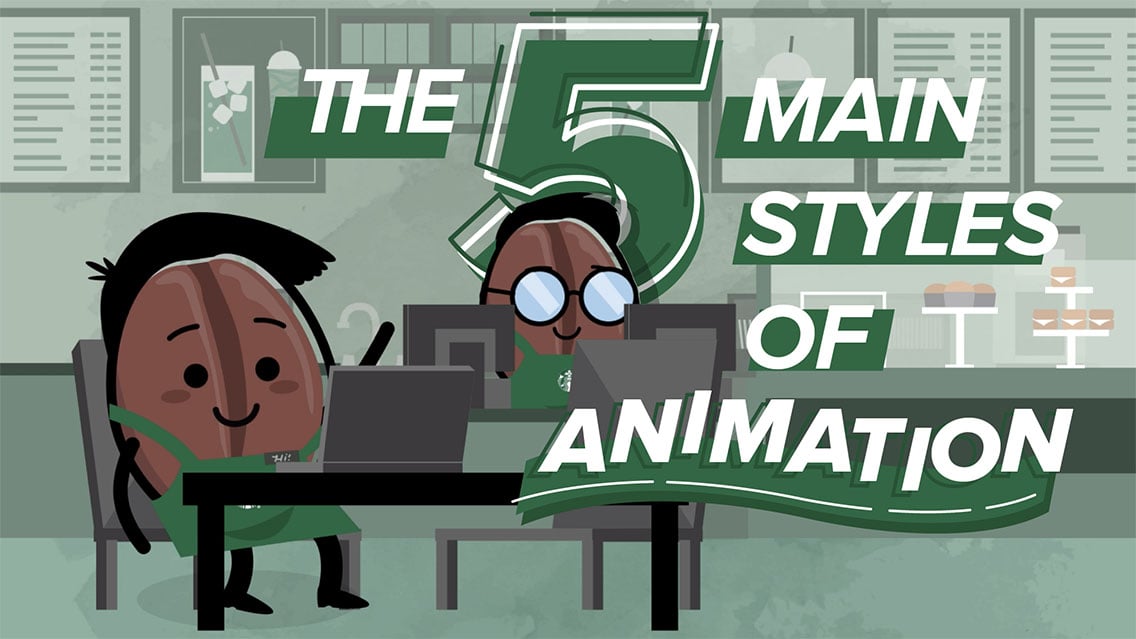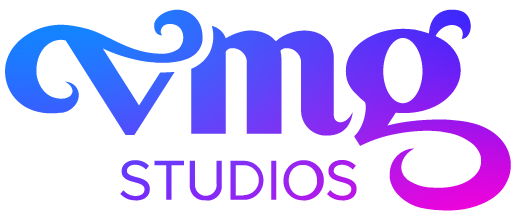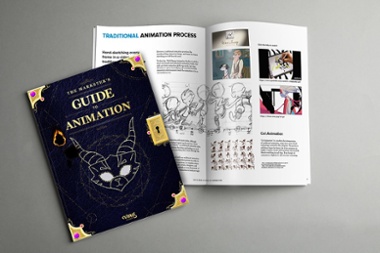
While our media capabilities and technologies are expanding every day, animation is a tool that is rapidly growing to meet its demand.
There are all kinds of data that show how effective video is when it comes to engaging a target audience, and animation only enhances that engagement. In fact, 76% of marketers say animated videos have helped them increase their profitability.
Animation is an amazing storytelling tool that has been around for a long time. Studios and creative agencies are utilizing it more and more with their clients to share stories and information in a way that fits their brand, is expandable, adaptable, and fun and interesting to watch.
One of the common misconceptions that I hear all the time as a designer and animator is, “I want an animation, but I don’t want it to look too cartoony.”
The word “animation” can lead people to instantly think of something like Looney Toons or Mickey Mouse. While yes, these are animations, there are many more styles than just cartoon shows designed to entertain kids.
Animators are always bringing new levels of sophistication and creating revolutionary ways to tell stories that are unique and modern, without being “cartoony.”
In this article, we will dive into 5 different styles of animation – all of which can be used in animated video marketing. We will explore the large spectrum of not only styles, but what kind of labor and technology go into each style.
FREE DOWNLOAD: The 5 Main Styles of Animation One-Sheet
Different Styles of Animation
1. Traditional Animation
Traditional animation refers to the animation style of the first big motion pictures, starting with Walt Disney Animation Studios in 1937. “Snow White and the Seven Dwarves” was the movie that revolutionized the animation industry and brought it to the main-stream as a fun new source of media and entertainment.
For Snow White, they used several types of artistic styles and creative tricks to make the immersive environment, but it was mostly a hand-drawn, frame-by-frame process that was labor-intensive.
This makes traditional animation one of the least economical options for studios to use nowadays. However, traditional animation practices like storyboarding, character design, and frame-by-frame sketching are still heavily used.
To this day, Walt Disney Animation Studios is still the most successful and influential animation studio. Not only are their animation skills top-notch, but their devotion to great storytelling and creating beautiful, immersive environments leads the animation to be as successful as it is. Creating a great narrative already paints half a picture, and the designers and animators fill in the rest.
Traditional animation still exists today, although technology has helped speed up the process. Some movies will pay “tribute” to traditional animation style, where they appreciate the labor and feeling you only get from watching something that’s been through the process.
A lot of animators will still use traditional animation and a frame-by-frame animation process in order to illustrate full character emotions, or complex action scenes with a lot of details. Artists, designers, and animators will create hundreds or even thousands of frames in order to get the animation to look just right.
“Cel Animation” is a modern-day interpretation of traditional animation, using more vector-based technology assisted by the computer. The process is still done frame-by-frame, but it lets animators do highly complex visuals and transitions and smoothly blend everything in real-time. Even though cel animation is digital, it’s still very time-consuming.
2. 2D Vector-Based Animation
2D vector-based animation is arguably the most common style of animation. 2D animation represents graphics that are created in 2-dimensional graphics programs such as Adobe Photoshop or Illustrator.
While these graphics can be manipulated to look 3D, ultimately, if you can’t rotate the object to get multiple views, it’s 2D animation.
While 2D has its limitations, there’s still an unlimited amount of ways to portray a high-quality animation in 2D. There can be a certain charm or pleasing aesthetic quality to seeing something that’s been simplified into an illustrated state and interpreted in a unique way, but still shows relatable life experiences and valuable information.
It can be used to portray feelings, emotions, or complex information in a way that a normal audience couldn’t usually digest. 2D animation is also the most widely used for branding and marketing due to the scalability and ease of distribution. It can easily expand from an animation to print to web-based marketing.
Overall, 2D animation is on the more economic side of production since you only have to worry about what the audience is seeing in a flat image, rather than the full dimensionality of the scene. It’s also much less labor-intensive than other types of animation and the most adaptable to change.
3. 3D Animation
3D animations are graphics that were modeled in a 3-dimensional environment and then animated. You can rotate the assets around in 360-degree space to get whatever angle you want for the composition.
Modeling 3D scenes, objects, and characters to create visuals is computer-generated imagery, better known as CGI.
Because of this amount of data, CGI animation is technically labor-intensive. You need high-powered computers to run programs like Cinema 4D, Houdini, and Maya.
It’s also artistically labor-intensive, as not all animators are able to do CGI, meaning it’s uncommon for one animator to be a jack-of-all-trades. Instead, you’ll likely have several animators who specialize in specific 3D animation styles or techniques such as 3D marketing videos, character animation, or special effects.
Despite it being labor-intensive, the benefits of CGI and 3D animation are visually limitless and creators are constantly pushing the boundaries of texture, style, and simplification.
Just like 2D animation, there’s a spectrum of quality. Animation studios like Pixar and DreamWorks focus on a simplified design then animate with hyper-realistic textures and depth that involve a complex narrative and multidimensional characters.
There are also animators who model things in 3D space and then simplify the scene to look like it was constructed in 2D. The mix between 2D and 3D graphics is more engaging and fun for the audience to keep up with.
Source: https://dribbble.com/shots/6159281-
Source: https://dribbble.com/shots/6364761-drawing-pals
Source: https://dribbble.com/shots/6446019-Firekast-illustration-Conference
Source: https://dribbble.com/shots/3006336-Boaty-McBoatface
There are also 3D special effects animators who focus on turning green screen footage and motion capture information into full-fantasy CGI. Science fiction and fantasy movies often use CGI to make the audience feel like they’re in another world.
This is also a special skill that not every 3D animator possesses. Modeling and animating objects to match a realistic environment is time-consuming and labor-intensive. Lighting, depth, and timing all have to match precisely in order to make the audience believe that what they’re seeing is real.
READ: 2D vs. 3D Animation: Pros & Cons for Marketing Videos
4. Motion Graphics
Motion graphics is a subgenre of animation. Animation is a very broad term that is both a noun and a verb, while motion graphics is only a noun. It would best be described as “supplemental animated graphics.” It’s there to provide more information than the core animation.
For example, the main types of motion graphics are:
- Animated text/typography
- Infographics
- Lower thirds
- Title cards
- Calls to action
- Video transitions.
While individually, these different assets do not make up a full video or animation, they can be applied to a narrative to enhance the experience and provide more information for the audience. Imagine a movie where the title never animated on-screen or there weren’t opening or ending credits.
They can also be used to enhance brand recognition, such as the animated logo for Pixar.
Motion graphics are also being used more in web design and are providing a more engaging interactive experience. You can now do full vector animations in just CSS and JavaScript without ever touching After Effects.
Motion graphics can also be done in 2D, 3D, traditional, or stop motion style. The main difference is that motion graphics only enhance an animation but are not a full animation themselves. An animation applies to any narrative or concept that is explained without video footage.
READ: 10 Principles of Motion Design
5. Stop Motion
Stop motion is arguably the most labor-intensive form of animation. It’s similar to traditional animation in the way that it’s also a frame-by-frame process.
While traditional animation is 2D and mostly hand-drawn, stop motion is photography turned into 3D animation.
There’s a very unique charm to its animation style – the motions aren’t super fluid and have an organic look to them to suggest it was moved by hand and not computers.
Kubo & the Two Strings BTS video
Basic stop motion production process is as follows:
- The scene is modeled in real life with props, objects, and materials.
- The characters are all created along with their different positions and facial expressions, and then set in the appropriate scene.
- The scene is lit and composed and then it’s ready to be photographed.
- The characters and scenes are then adjusted slightly, and another photograph is taken.
- This process is repeated, adjusting the characters and scenes every time until the desired animation and pacing is fully photographed.
- All of the photographs are then compiled together to create a 3D animation completely done with hand-made photography.
Stop motion feature films are pretty unique and also require intense pre-production. Since one scene can take up to thousands of carefully staged photographs, the room for error is tiny.
Stop motion is a great animation style to portray certain moods or emotions. One of the most iconic films, Tim Burton’s “The Nightmare Before Christmas” shows how stop motion animation can really sell a certain aesthetic. It helps bring scary, exaggerated characters to life and gives them an unsettling movement style.
It can also be used in marketing to convey a more “organic” or “hand-made” style that can fit a certain brand. Stop motion capabilities are limitless!
Read: What is Stop Motion? (Definition + Examples)
Adding Different Animation Styles to Your Video Marketing Strategies
To sum it all up: animation takes time. Whether it’s frame-by-frame photography or a simple, vector-based 2D animation, a high-quality animation requires careful planning and patience.
The narrative and concept have to be agreed upon by involved parties, the style should be fresh and innovative, and the animation should leave the audience feeling a certain emotion or call to action.
Planning out characters, exploring different style options, creating scenery, and developing the narrative are all things that can go through several revisions. Everything from the artistic direction and animation styles, to the music and sound effects, need to align in order for the animation to achieve its full desired effect.
Another factor in quality is the budget. While an animation can technically be done at any price point, technology and quality of the animation varies heavily. 3D animation takes much more time and technical power than 2D, so it’s typically more expensive. The more money in the project, the more immersive the animation can be.
Good animation also takes testing and research. How can certain parts be enhanced or changed to better fit the concept? Does the audience react the way we want them to? Why or why not?
By understanding the different types of animation and the resources they require, we can effectively show everyone the true value of animation.
Want to learn more about animation? Click the image below to download the free eBook, The Marketer's Guide to Animation!






